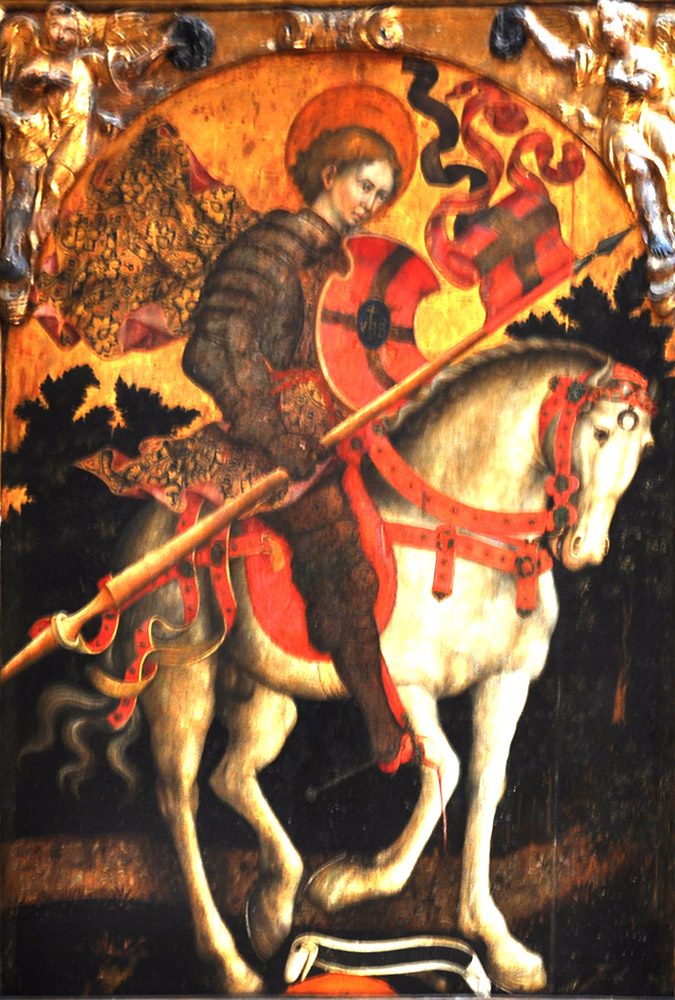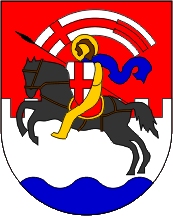Before the 14th century Chrysogonus was more likely to be arrayed as a Roman military office of high rank, as in the second picture at right. This iconography continues in Orthodox icons (example). In the west, artists reverted to it after the period of the Crusades, as in this painting from 1622.1
The saint is remembered as a military officer who was imprisoned for his faith. According to the Golden Legend, St. Anastasia succored him in prison and when her husband found out he had her arrested. Chrysogonus was then brought before the Emperor Diocletian, who ordered him to sacrifice to the gods. When the saint refused, he was beheaded. This sequence is pictured in a set of images in the apse of San Crisogono in Rome. Because of her association with Chrysogonus in the legend, Anastasia is sometimes paired with him in the art (Petricioli, 82, 128, and this relief in Zadar's Cathedral).
Prepared in 2014 by Richard Stracke, Emeritus Professor of English, Augusta University, revised 2015-10-20.

Michele Giambono, St. Chrysogonus, 1411 (See the description page)

Detail from a 13th-century Madonna and Child: St. Chrysogonus dressed as a Roman military officer in cloak, cuirass, and the feather-style skirt known as the ptergues. (See the description page.)

St. Chrysogonus with his red-cross shield figures on the coat of arms of the city of Zadar, Croatia. He is the patron saint of Dalmatia, of which Zadar is the principal city. (Source: Wikimedia Commons.)
DATES
- Feast day: November 24
- The Golden Legend says St. Chrysogonus died in 287.
BIOGRAPHY
- Golden Legend #171: html or pdf
- Butler, IV, 418-19.
- Chrysogonus's vita in The Roman Breviary: (Latin only): 1112-13
ALSO SEE
NOTES
1 Petricioli has a 14th-century reliquary coffer with Chrysogonus as a galloping Crusader in armor and two 18th-century works that have him back in his Roman garb (9, 82, 128). In the museum featured in Petricioli's study I have also seen a wood sculpture featuring a chalice with Eucharistic host flanked by Saints Anastasia and Chrysogonus. The latter is dressed as a Roman officer and carries a spear. Judging from the chalice iconography, the work is almost certainly post-medieval.